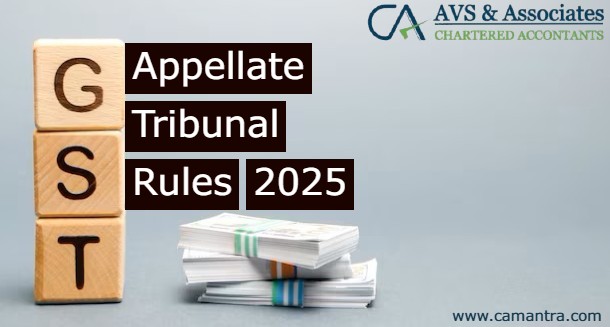India’s Goods and Services Tax (GST) system has streamlined the taxation process, yet disputes are an unavoidable part of its implementation. The GST Appellate Tribunal (GSTAT), as the second appellate authority, offers taxpayers an essential platform for challenging orders issued by the Appellate or Adjudicating Authorities. Understanding the GST Appellate Tribunal Rules, 2025, including the key appeal timelines, is crucial for businesses and tax professionals.
Ministry of Finance Notification
On April 24, 2025, the Ministry of Finance (Department of Revenue) issued Notification G.S.R. 256(E), which introduced the Goods and Services Tax Appellate Tribunal (Procedure) Rules, 2025. These rules, established under Section 111 of the Central Goods and Services Tax Act, 2017, are designed to govern the operations and procedures of the GSTAT.
Initiating an Appeal: Essential Steps and Timelines
Appeals are filed when taxpayers disagree with orders from the Appellate or Adjudicating Authority. The GST Act specifies key timelines for filing an appeal:
1. Prescribed Time Limit for Filing
Appeals must be filed within 3 months from the date the order is communicated to the appellant. Failing to meet this timeline can result in rejection, unless the delay is condoned with valid reasons.
2. Permissible Extension of Time Limit
The GSTAT can extend the filing period by up to 3 months if the appellant provides a valid reason. This extension is not automatic and requires a compelling explanation for the delay.
3. Designated Form for Appeal
Appeals must be filed using a prescribed form available on the official GST portal. This form requires detailed information about the appellant, the order under appeal, the grounds for appeal, and the relief sought.
4. Required Accompanying Documents
Supporting documents, such as a certified copy of the contested order, relevant documents from the original proceedings, and a statement of grounds for appeal, must be submitted along with the appeal.
Key Features of the GSTAT Rules, 2025
The GSTAT rules are crafted to simplify the appeal process and facilitate the prompt resolution of cases:
- Emphasis on Digital Filing
The rules promote digital filing of appeals and related documents, improving efficiency and reducing paperwork. - Appeal Fee Structure
A prescribed fee is required when filing an appeal, varying based on the tax, interest, or penalty involved. The rules will detail the fee structure and payment methods. - Constitution of Benches
The GSTAT will include a Principal Bench and additional regional Benches. Each bench typically consists of a Judicial Member and a Technical Member. The rules will define case allocation and bench composition. - Hearing Procedure
The GSTAT will issue notices, allow responses from the tax authorities, and permit the submission of evidence and oral arguments. The Tribunal has the authority to regulate its procedures but must follow natural justice principles. - Powers of the Tribunal
The GSTAT has broad powers, including summoning witnesses, compelling document production, and issuing witness examination orders.
The Importance of Adhering to Timelines
Strict adherence to the appeal timelines in the GST Appellate Tribunal Rules, 2025 is essential. Missing the 3-month filing deadline without valid justification may lead to rejection. While the GSTAT can extend this period by three months, timely filing is the best course of action.
The GST Appellate Tribunal Rules, 2025 provide taxpayers with a clear framework for navigating the appeal process. By familiarizing themselves with the key timelines and procedures, businesses can successfully contest unfavorable GST decisions. Keeping up to date with amendments and adhering to prescribed timelines ensures successful navigation of the GST appellate process.

